What no one tells you about a strong feature adoption rate
Feature adoption rates seem straightforward with a direct formula. But it couldn’t be further from the truth. Learn to actually increase yours with real growth.

Not long ago, I was spending time with old friends downtown. One person brought up their experience visiting Colombia. We were all interested and asked many questions. But there was another friend who, instead of showing curiosity, continuously tried to steer the conversation toward their experience in a different country.
As you can imagine, there was an awkward tension as the friend forced a different conversation onto the group.
Unfortunately, customers can experience the same friction with feature adoption rate initiatives.
SaaS owners sacrifice the customer experience to hit their feature adoption metric. Often, their feature adoption metrics fail to represent the reality of the app. Later down the road, it shows in the churn rate and customer retention rate.
A true, strong feature adoption rate should perfectly fit with customer needs. New users ought to enjoy a personalized experience and the new-feature onboarding experiences that fit their customer journey.
Instead of pushing a feature to a generalized audience, we can learn how to personalize the experience and present the perfect feature to the right person at the right time.
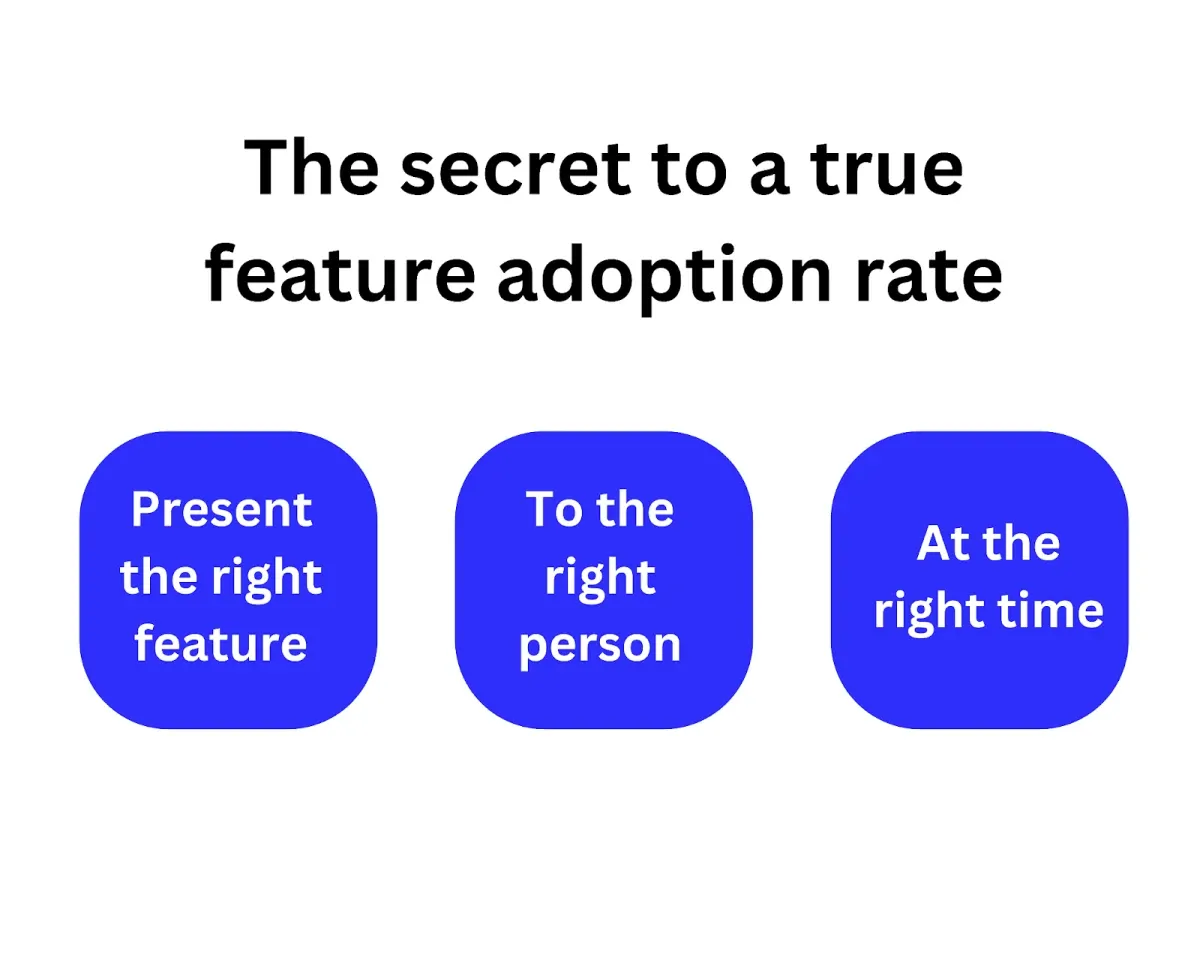
What is a feature adoption rate?
A feature adoption rate is the measurement of successful repeat usage by customers for a particular feature.
This differs from a product adoption rate, which only measures a customer using your app for anything.
Companies can push a general feature adoption experience and lose active users, or they can provide a personalized feature for each customer use case.
The latter option offers a healthier customer experience (and, therefore, a longer customer life cycle) and a truer reflection of an accurate product feature adoption rate.
Why do feature adoption rates matter?
Feature adoption metrics are only helpful if they provide actionable insight. Feature adoption rates are one of the most effective ways to understand customer health, but they’re also most commonly misrepresented.
Do customers like the feature(s) you provide? Are they using it consistently? The better you understand the feature adoption rate, the more you can improve it. Feature adoption means customers see the value of your tool and use it. If they adopt your features, they want to stay and use your platform.
Once we understand the importance of a good adoption rate, we can work on increasing it. Many companies hurt themselves by conflating the numbers with forced experiences in pursuit of a better rate.
The myth of a good feature adoption rate
You see it in politics, new schools of thought, and everywhere you turn: People know how to bend the numbers to their biases and goals.
Darrell Huff, author of “How to Lie with Statistics,” said it best: “If YOU can’t prove what you want to prove, demonstrate something else and pretend that they are the same thing. In the daze that follows the collision of statistics with the human mind, hardly anybody will notice the difference.”
In essence, anybody can make a point using numbers. After reflecting on how statistics can be warped, it’s easy to imagine someone intentionally bending numbers in their favor.
So—you think that false adoption rates won’t touch you. But think again, Johnny Bravo.
The most dangerous feature adoption rates are the ones unintentionally influenced by your goals—so much that you force experiences and, therefore, cloud the true reality of the user experience and adoption.
Lucas Howard, engineer at Command AI, lays out the contradiction of traditional product adoption methods:
“Problems emerge when you optimize for ‘hitting a number’ for the sake of hitting a number. For example, let’s say your goal is to get 10% of your users to visit your new feature and take the first relevant action related to it.
“Your metric-driven [project manager] realizes they can hit 100% by forcing their users to complete a product tour.
“Great, you all hit the number! But you failed at real adoption because users clicked through the tour as fast as they could, then went back to what they wanted to do originally. Oh, and you annoyed your users.”
It’s like getting in line at a local food truck, your mouth watering for the burger the food truck is known for. You ask for the burger, and they say, “No, all we have is soup.” Before you can politely refuse, they enter your order into the system and ask for your card.
You might get confused and go with the flow of the “experience.” But you try the soup, even though it’s not what you wanted. It’s not as good as your favorite burger, and so you’ll think twice before coming back.
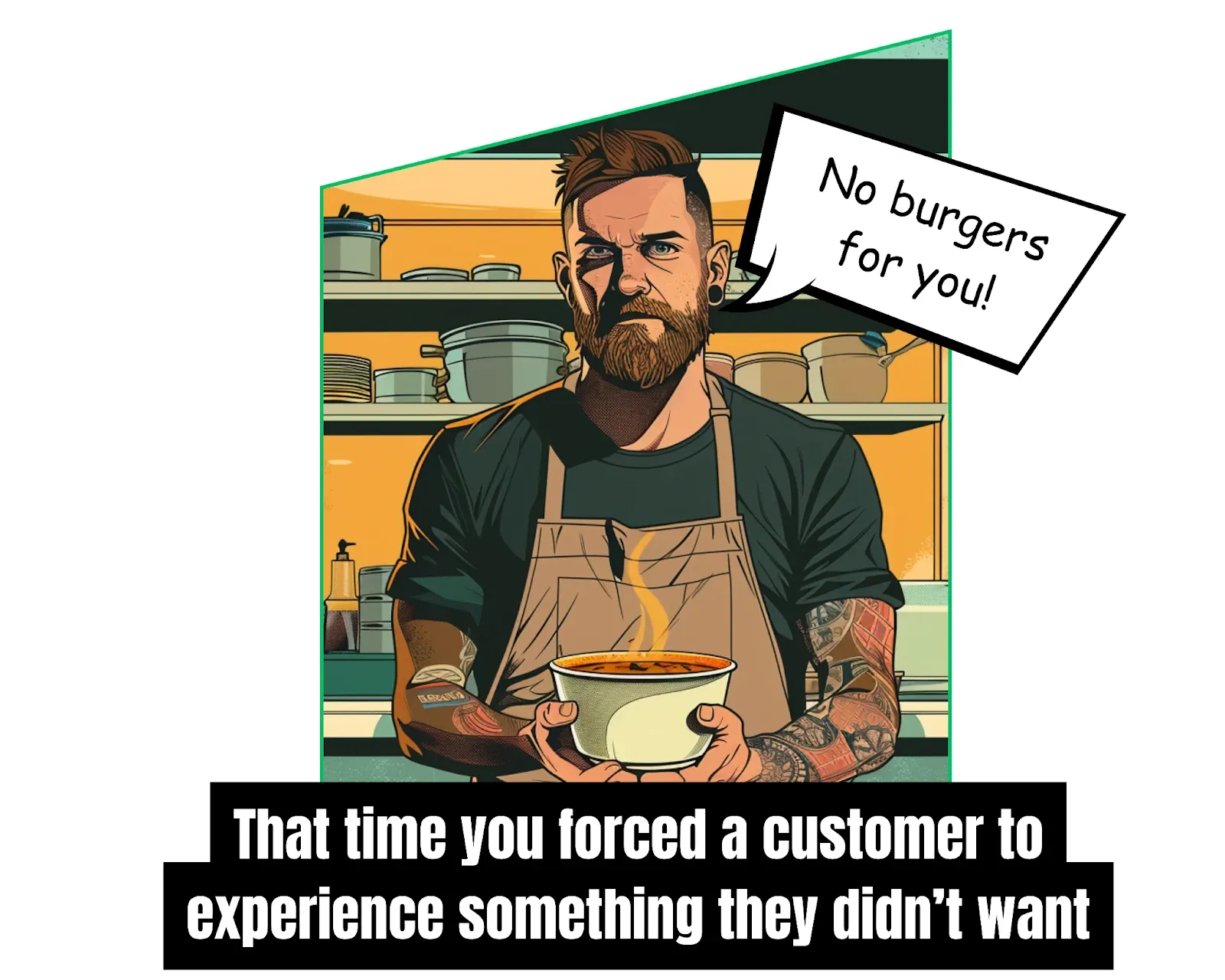
The specific feature adoption rate? I suppose you can say it was 100% on the soup. The reality? You’ll discover it when half of your customers trickle away over the next few weeks.
It’s the context of feature usage and adoption that matters—not how many users you force to temporarily “adopt” features.
So, how do we stop this reality?
True and effective feature adoption requires contextualizing the situation based on your product/feature and your users. In other words, we have to make it personal.
How to measure feature adoption rates (the personal way)
We can calculate feature adoption rates by dividing the number of active feature users during a period by the number of user logins during the same period. Then, we multiply the result by 100 to get our percentage. However, calculating the feature adoption rate is more about a formula.

It’s likely you already have your core features in mind—the ones you want to introduce to your new users. Or you might want to kick off a feature launch to existing users.
But you can’t just push each one simultaneously and tick off checkboxes.
SaaS companies should instead segment audiences based on their use case needs and why they want your app in the first place.
Mathew Pregasen, CEO of Letterbrace, the technical writing agency, states on feature adoption segmentation that “Different classes of users may use features in various ways. For instance, an early employee at a seed-stage startup will have distinct needs from an enterprise user. While both users may utilize similar features, their end goals may be distinct...you should evaluate feature adoption funnels on a per-user segment basis...”
Often, we can start improving the experience per user by asking the customer outright what they need so we can better guide users.
Companies can provide micro surveys at the start of the onboarding process or for a new-feature release. You can put users on a personalized customer journey based on their answers.
For example, if you have a graphic design app for teams, each user will look for something different.
One person might want to create a graphic as soon as possible, while another might want to upload an existing project and collaborate with their team. Your survey can identify these needs and point users to the exact use case for immediate customer activation.
Companies can ask the following questions as they develop these segmentations based on buyer journeys, how users interact with features, and user segments.
- Who are the users, and where do they belong in your customer persona analyses?
- What specific features do customers need, and what do they want to do?
- How can you present customers with a personalized experience and decrease time-to-value?
- How can you iterate for improvement per segmentation?
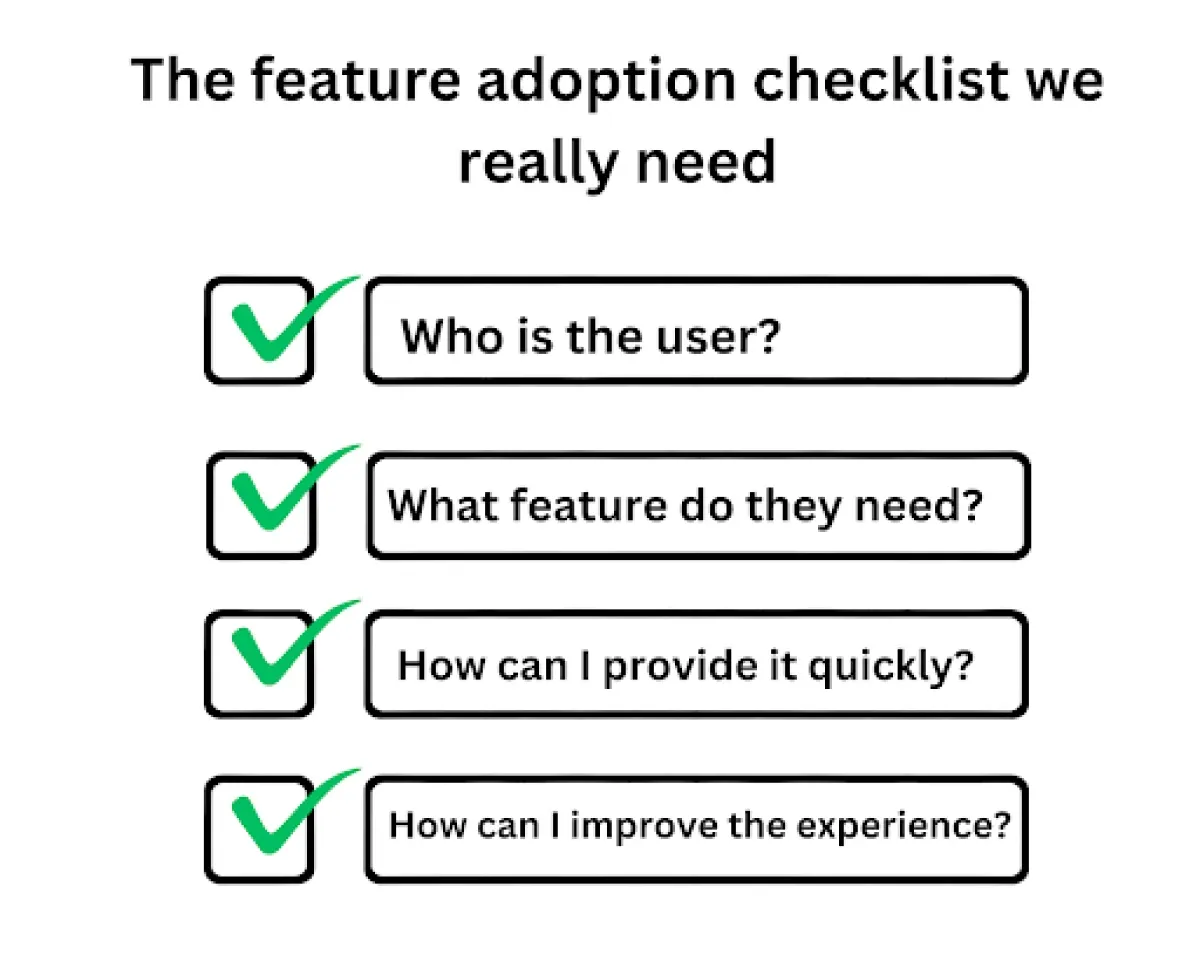
The key to answering these questions ultimately boils down to improving your time-to-value. You need to show the user that you can solve their real problems quickly and directly.
Even if you have areas of improvement, like rough edges or missing functionality, you can overcome these obstacles with a strong time-to-value.
When it comes down to it, users just want to solve an issue as easily and as quickly as possible. If you can prove value in seconds or a couple of minutes, you’ve shown your users your app’s worth—and won enough trust to build customer loyalty over time.
Using these user segments and contextual feature adoption journeys, you can then calculate a feature adoption rate that’s more accurate and relevant per audience.
Ways to improve feature adoption rates
If you can focus on creating a faster time-to-value, you’ve already done half the work. Time-to-value improvement falls under a better onboarding experience. Ensure that customers can get to where they need to go in a familiar, fun, and direct way.
There should be no annoying popups but rather highly relevant nudges that point new users in the right direction. Additionally, your checklists should be very specific to the feature you want your customer type to use.
For example, suppose the user wants to collaborate on a design they already have. The checklist would ask them to upload the file, invite team members, and point to popular communication tasks.
Then, study user behavior. You can analyze monthly active users specifically in regard to that feature and their usage. Then you can inquire if they are satisfied with the outcome.
You can leverage your heat map and session replay data. Find out where new customers are spending the most time. Review the experiences and identify moments of confusion, deadends, and where users may bounce from the page or area.
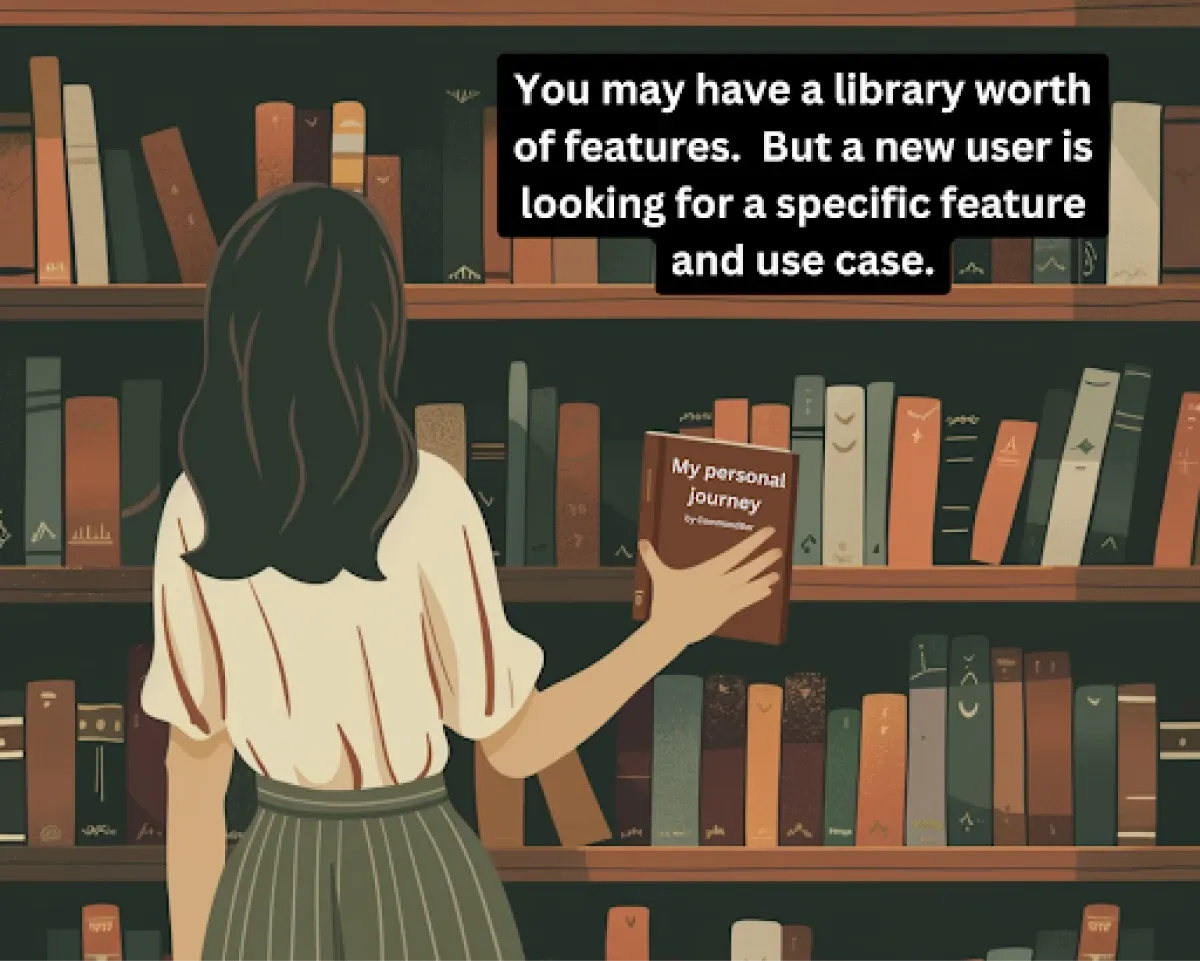
You use a user assistance platform that provides the feature adoption analytics and functionality to deploy onboarding experiences and study the data. Leverage it to inform your customer journeys and execute a plan and strategy to provide a better user experience.
Through segmentation, each user category should have a personalized trajectory. By studying these behaviors and unique feature adoption rates, you can improve each experience.
You can also develop a more enriched and focused experience based on micro segments. For example, users who want to collaborate on an uploaded design might still have different methods in mind.
One user wants to invite a team member to provide feedback, and another wants to lay out a specific style guide on how to craft future brand designs.
From seemingly the same user segment, these two needs would require different approaches.
First user: point to the feature that sends an email invite to join the workspace.
Second user: point to the feature to designate the design as a template with clear parameters, then provide a sharing link and email invite option.
The more you leverage your user assistant platform and obsess over the customer experience, the deeper you can dig into and improve the user adoption experience. You can personalize it wherever possible.
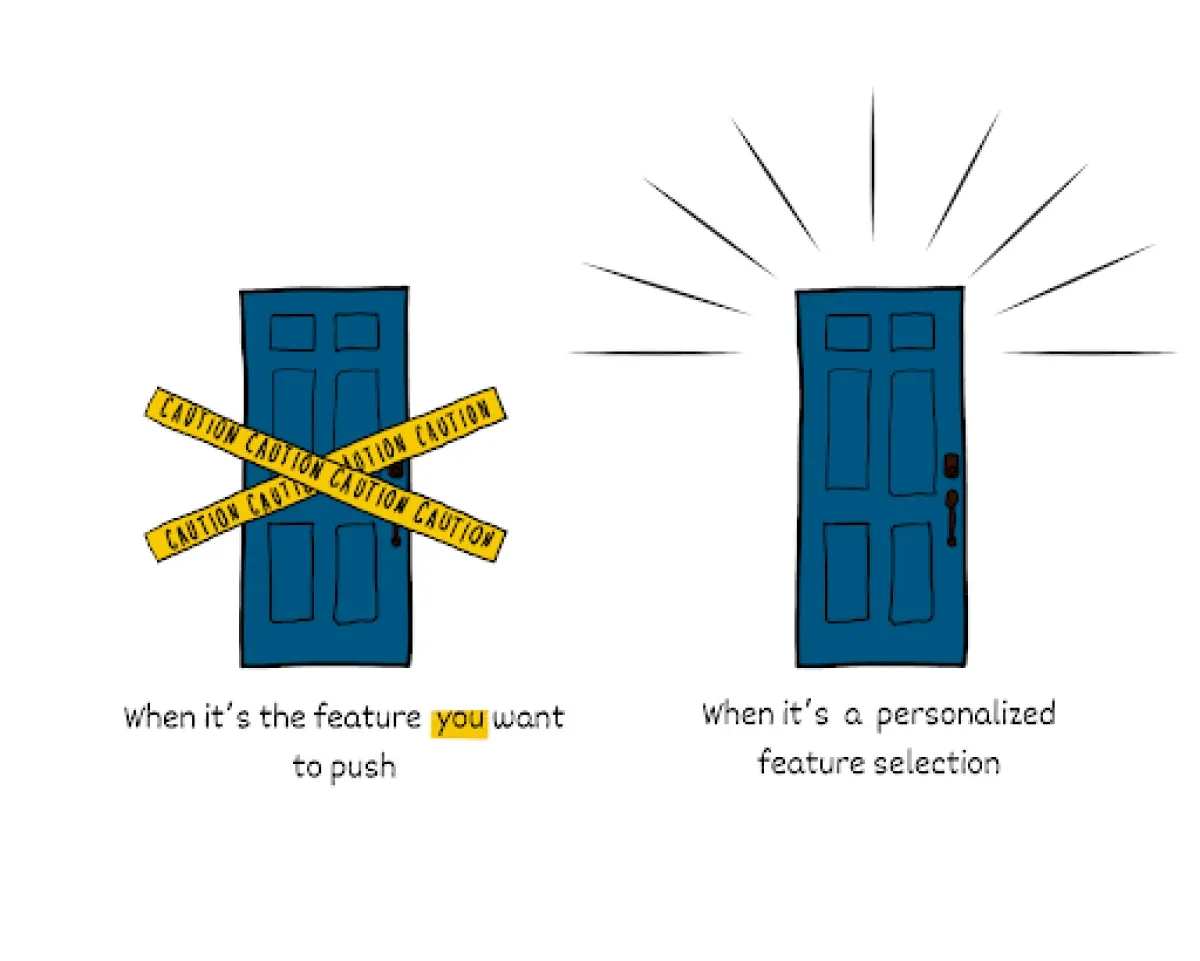
Finally, and most importantly, ensure you listen to the users. First-party data is always the most valuable, and if you can collect user feedback straight from the source, you’re already ahead.
Ask users through onboarding surveys, post-activation surveys, and other insightful points in the user adoption journey to inform your strategy.
You can also use deadends to provide indirect forms of customer feedback.
When a user utilizes your universal search for more information, you can get a hint of their thought process and what they need (and if the resource doesn’t exist, you can create it for future customers). Repeat the research feature adoption process through your 24/7 user assistance chatbot and other resources that provide a rich customer experience.
Plus, these tools can automatically trigger new-feature interactive walk-throughs as customers engage with them.
Another way to listen is by providing state-of-the-art customer support. Lucas Howard states:
“Great support signals to your customers that you (a) care about them, (b) have a competent team, and (c) will develop your product with them in mind. That could be the only difference between someone buying your product and buying a competitor’s product.”
Supporting your existing customers and new users will not only help reveal insights and improve feature adoption methods, but it will also nurture your users and increase customer retention.
The link between top-tier tech and better feature adoption rates
Like a carpenter who needs the right tools to create the best furniture possible, you need the right platform to improve feature adoption rates.
As you search the market, you may find a basket of tool options with different functions. One analyzes behavior and can track feature adoption. The other provides features to facilitate onboarding. This can be helpful but confusing as you juggle many tools and try to fit the pieces together.
The key is to find an all-in-one solution that can help you leverage data and deploy the tools necessary to implement your feature adoption funnel.
You can study user behavior and collect feedback. Simultaneously, you can provide product tours, search, chat assistants, resource hubs, in-app messaging, and many other necessary tools to provide a holistic customer journey for every user and learning style.
Achieve your best feature adoption rates with a user assistance platform

By now, you should have a more focused idea of how to improve your feature adoption rate. In short, it’s not about “pushing” adoption but guiding users to their unique use case as soon as possible.
If you can drive feature adoption through the user-focused strategy, more healthy feature adoption metrics will follow. You will increase full product adoption, customer retention, customer loyalty, feature usage, and more—all because you care about the user first and provide what they need when they need it.
By using tools like Command AI, which can analyze data and deploy customer experience–friendly features like nudges, questlists, HelpHub, universal search, in-app guides, and more, you can provide an unmatched feature experience. You can win customers, increase lifetime value, and prove your product’s value in seconds.
So, let’s start improving our feature adoption rates without fuzzy numbers. Instead, we can provide a great app experience for customers and authentically increase feature adoption—the numbers that actually count.
